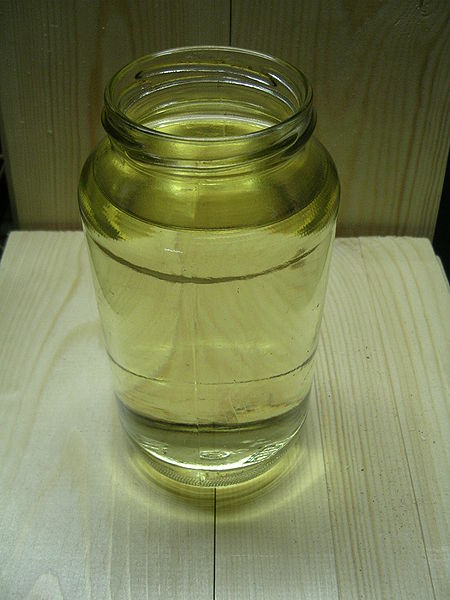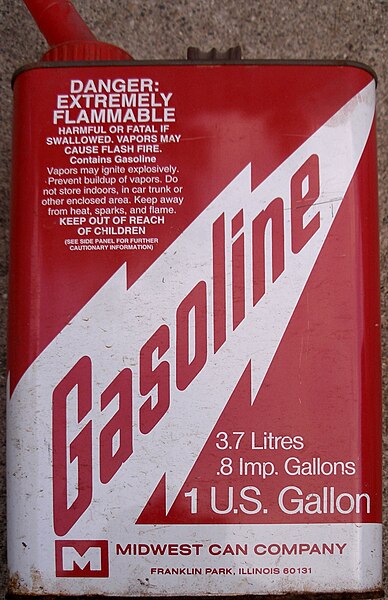Common ethanol fuel mixtures
Several common ethanol fuel mixtures are in use around the world. The use of pure hydrous or anhydrous ethanol in internal combustion engines (ICEs) is only possible if the engines are designed or modified for that purpose, and used only in automobiles, light-duty trucks and motorcycles. Anhydrous ethanol can be blended with gasoline (petrol) for use in gasoline engines, but with high ethanol content only after engine modifications to meter increased fuel volume since pure ethanol contains only 2/3 of the BTUs of an equivalent volume of pure gasoline. High percentage ethanol mixtures are used in some racing engine applications as the very high octane rating of ethanol is compatible with very high compression ratios.
Typical warning placed in the fuel filler of U.S. vehicles regarding the capability of using up to E10 and warning against the use of blends between E20 and E85.
Typical manufacturer's statement in the car owner's manual regarding the vehicle's capability of using up to E10.
EPA's E15 label required to be displayed in all E15 fuel dispensers in the U.S.
Blender fuel pump in East Lansing, Michigan selling E15 together with the standard gasoline (E10), and the higher blends E30 and E85.
Gasoline or petrol is a petrochemical product characterized as a transparent, yellowish, and flammable liquid normally used as a fuel for spark-ignited internal combustion engines. When formulated as a fuel for engines, gasoline is chemically composed of organic compounds derived from the fractional distillation of petroleum and later chemically enhanced with gasoline additives. It is a high-volume profitable product produced in crude oil refineries.
Gasoline in a glass jar
An American metallic gas can lists capacity in three measures: U.S. gallon, Imperial gallon, and liters
A modern gasoline container is made of colored, plastic material that does not rust, whilst the red color exclusively identifies a fuel container.
A pumpjack in the United States








